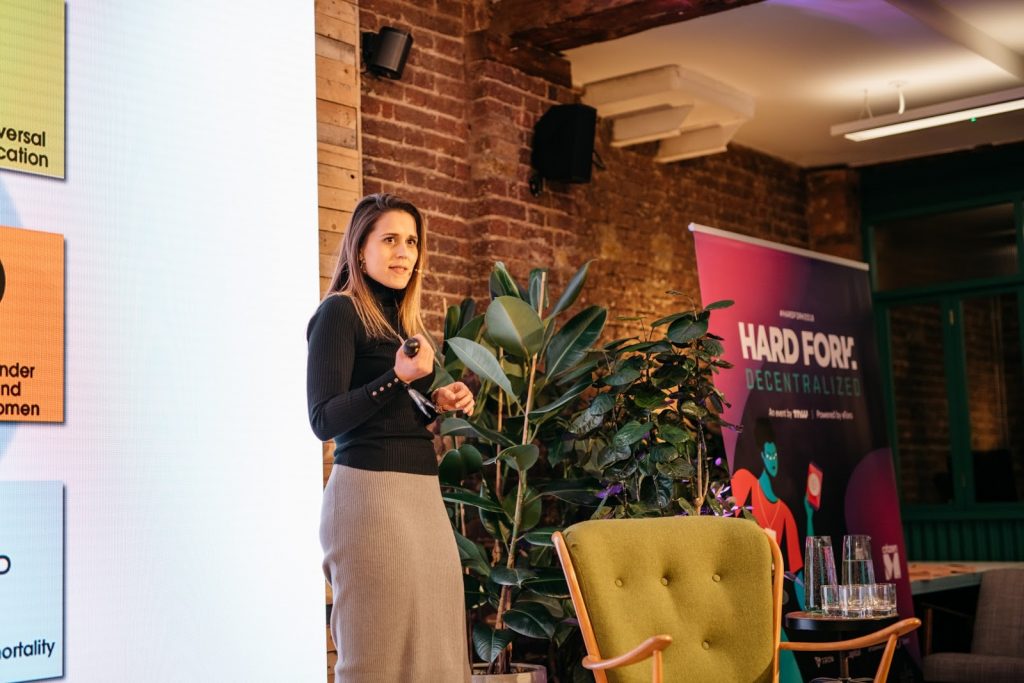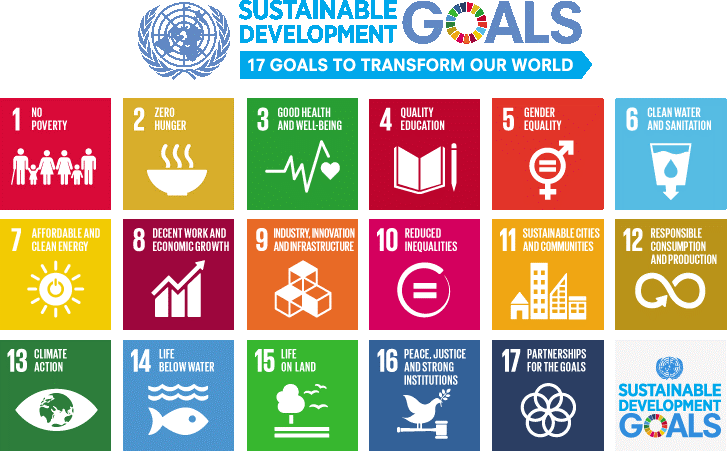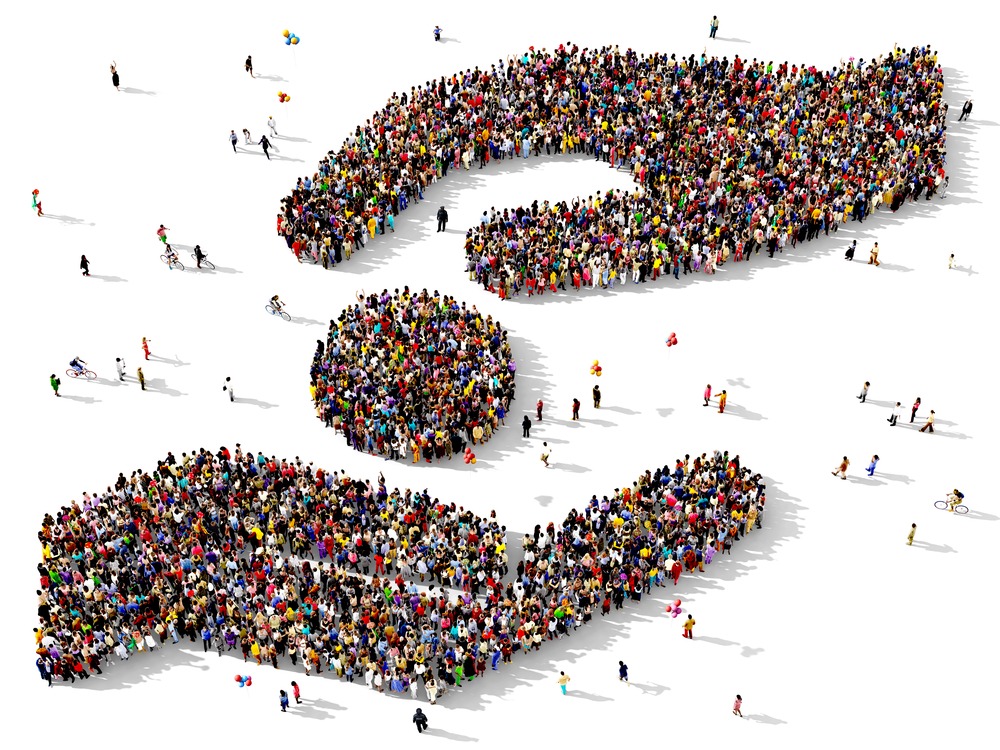
Tech for good: Ira Ryk-Lakhman talks about how blockchain is a force for good at the Hard Fork Decentralized event in mid-DecemberIn September 2015, some 193 countries of the United Nations’ General Assembly agreed upon 17 Sustainable Development Goals (SDGs) to be achieved by 2030. These worldwide aims span social and economic challenges, and include addressing poverty, hunger, health, education, global warming, sanitation, and energy.
As we approach the end of the year, it is a perfect time to assess the progress of this long-term project. I am sorry to report we are not on the right track, to put it mildly.
[caption id="attachment_96905" align="alignnone" width="728"]

Taking aim: The Sustainable Development Goals, as set out by the United Nations and agreed upon by 193 states in September 2015[/caption]
A damning report, adopted by the UN and published in September, states that no country is on track towards achieving all SDGs by 2030. There are a number of reasons for this pitiful state of affairs, not least political crises across the globe (and the changing commitments of certain key players) that have pushed it down the list of priorities, with matters closer to home deemed more pressing.
The disappointing assessment comes at a time when the world’s population is growing and we are still dealing with the biggest humanitarian crises in history on the one hand and, on the other, upwards of 30 percent of funds allocated to humanitarian aid is lost to corruption. This is mind-blowing. Other estimates calculate that over 80 percent of the funding that is allocated for charities does not make it to the final beneficiaries.
If so, traditional ways to achieve the SDGs have proved futile. Against this reality, and in order to achieve the agreed-upon global 2030 Agenda, it is high time we embraced both more innovative and nuanced ways of thinking and new technology that is not susceptible to corruption and bureaucracy, which will withstand changes in political tradition by going to the citizens directly. The solution, in fact, is staring us right in the face: blockchain is the answer and the way forward.
Talking tech
I addressed these concerns in more detail at the Hard Fork Decentralized summit, in London’s Shoreditch, in mid-December. The event was sponsored by eToro, the social trading platform that has invested $1 million in a new blockchain project, GoodDollar, which I am supporting.
The GoodDollar experiment, launched in November by eToro CEO Yoni Assia, is a research hub that explores how decentralised cryptocurrency and blockchain technology may enable models based on universal basic income (UBI).
GoodDollar is one among a growing number of impressive examples of how groups of pioneering thinkers are using blockchain technology for good, and – crucially – working together, and openly, to catalyse meaningful change for those most in need.
[embed]https://www.youtube.com/watch?v=m5LlMwTD2bA&feature=youtu.be[/embed]
GoodDollar Official Announcement - Yoni Assia, Web Summit Lisbon, Nov 07 2018
Backing blockchain
At the outset, it should be explained that there are various ways to classify blockchains and many technologies are located on the spectrum between public blockchain and permissioned, where restrictions can be imposed on who can read, write, or access the blockchain.
A public blockchain is a decentralised, distributed ledger in which transactions are permanently recorded and nearly impossible to alter, through the use of cryptographic techniques. The chain is managed in a peer-to-peer fashion by nodes (consisting of computers or servers). Rather than relying on traditional intermediaries to authenticate transactions, a mathematic consensus protocol determines and administers the rules for transactions and updates the chain accordingly.
This technology allows participants to collaborate without having to rely on a single, trusted third party. This also means that the participants in the chain can access and check the ledger at any time.
Blockchain, therefore, ensures immediate, across-the-board transparency. Transparency is not only a key feature of blockchain, it is central to fighting corruption and bureaucracy. Further, the decentralised and distributed nature and the use of cryptographic techniques makes blockchains highly resilient to cyber-attacks relative to traditional databases. This resilience allows blockchain technology to be used to address sensitive tasks.
These notions have not gone unnoticed by the UN, who announced in its Usage of Blockchain in the UN System Desk Review (August 2017) that 15 different UN entities are carrying out different blockchain initiatives. Since then, more initiatives have been considered and implemented.
For instance, in February 2018, the United Nations Children’s Fund (UNICEF) launched Game Chaingers: a crypto-based charity that invited gamers to raise funds for children in Syria by mining ethereum. Gamers downloaded a programme (Claymore) and, using the graphics card of the PC, mined ethereum while the computer was left on, but not in use. The mined currency was then sent directly to UNICEF’s e-wallet, and from there it went to the beneficiaries, the children. The programme ran for 59 days, engaged 12,000 computers, and was able to raise almost £10,000.
Although the scope and duration of the Game Chaingers project were narrow, it illustrates an important feature of blockchain: inclusivity, and more pointedly, the ease with which inclusivity can be attained. Blockchain enables projects to reach members of the public or subcultures – in this case, gamers – who are not necessarily those traditionally engaged with charitable work and fundraising. The Game Chaingers initiative was successful in raising awareness of the biggest humanitarian crisis of our time among age groups which are often not considered as active in charitable or humanitarian work.
Inclusivity is at the heart of the SDGs. The global 2030 Agenda cannot be reached unless all stakeholders – and this group comprises every single one of us – are taking part in the process. Indeed, SDG goal number 17 underlines the importance of collaboration and forging global partnerships.
[embed]https://youtu.be/WpjDF_CmCSM[/embed]
GoodDollar Interview Series - TheNextWeb 2018 - Ira Ryk-Lakhman, Dec 13 2018
Another great example of how the UN is using blockchain is the Building Blocks initiative, which was developed by the World Food Programme (WFP). Building Blocks runs on a private, permissioned blockchain using the Parity Ethereum client with a Proof-of-Authority (PoA) consensus algorithm.
The WFP, the world’s largest humanitarian agency, is tasked with ending hunger worldwide, and is responsible for feeding some 80 million people. Since 2009, the assistance of the WFP is delivered in the form of cash transfers, which, according to the WFP, were likely to reach close to $1.6 billion by the end of 2018.
At the same time, the need to work with local and regional banks to transfer money to those who need food entails significant and costly impediments in the form of exchange rates, transactions fees, time constraints, etc. The money spent on these ancillary costs could – and should – be better used to reach and feed more people.
Indeed, Houman Haddad, the WFP’s finance officer, reports that the replacement of the local banks and the other financial intermediaries with blockchain is directly responsible for saving 98 percent of these fees. In this case, the use of blockchain put food in people’s mouths.
Improving interoperability of international organisations
By using the blockchain, Building Blocks essentially made the financial intermediaries obsolescent, if not completely obsolete. In lieu of providing the local bank with a list of beneficiaries for whom accounts are to be opened and deposits are to be made, which required the transfer of money in advance, a digital identification profile is now uploaded for each beneficiary with the biometric data of the person (using the UN refugee agency’s existing biometric authentication technology that allows refugees to identify themselves).
Then, an entitlement is uploaded to the person’s account. Those people can now walk into a designated grocery store or supermarket in or near the refugee camp and buy food using not a wallet or cash but through having their eyes scanned by the cashier. They confirm the identity, query their account, and settle the bill with a blink of an eye, literally.
For the end user, this feels like using a regular MasterCard. But it is even easier for there is no concern that the card will be lost. For the UN, this is the blockchain: a clear transparent ledger, that produces a better estimate of the needs of the refugees in the camp and their consumption.
It also allows the UN to retain a significant degree of flexibility, which is an important attribute of the work with the blockchain. In contradistinction to the previous method that utilised local banks, the UN is now able to open accounts and upload entitlements almost in real time if, for instance, a wave of refugees arrives to the camp. Under the previous laborious model, people waited, often without food, for their bank accounts to be ready.
Further, the replacement of the financial intermediaries with the blockchain better protects the identity, security, and privacy for the Syrian refugees. Under the previous model, a list of beneficiaries had to be provided in advance to third parties, and lists tend to leak. Moreover, using the blockchain, the UN can monitor transactions. The chain essentially contains a full record of every transaction that occurs at the designated retailers. Under the previous model, the local banks provided the UN reports of the distributed and used deposits and transactions. Such reports were often partial or inaccurate and practically impossible to verify.
Since 2017, Building Blocks helped the WFP distribute cash-for-food to over 100,000 Syrian refugees in Jordan. At the next step, the programme will cover all 500,000 refugees in the country.
But Building Blocks does not end with Syria. Nor is it limited to the WFP. The aspiration is that other UN agencies will link to the chain already in place. Widespread blockchain adoption will enable better interoperability between UN agencies, saving time and money by significantly reducing the duplication and fragmentation of information. Other agencies, such as the World Health Organization, for instance, can adopt the technology and add additional information to the chain, such as the vaccination history of Syrian refugees.
Adding more organisations to the technology is good not only for the UN, but also for the beneficiaries themselves. The current initiative runs on a permissioned blockchain, where the WFP is the central authority that decides who can join the chain and participate in transactions. While this model allows them to process transactions faster (therefore reducing costs), it also raises the concern that the chain will be tampered with since the WFP also has the power to change transaction history.
Simply put: if more UN agencies, and even outside non-profit organisations, will be allowed to join and more nodes will be allowed to be added to the chain, the network could move towards a more public, decentralised and distributed form of blockchain. As such, it will be significantly more difficult to tamper with the information stored on the chain.
Going forward: empowerment through digital identity
There are a great many more examples of the use of the blockchain to promote and facilitate sustainable development. The essence, however, is not in the specifics of these initiatives but rather in their commonalities. They all point to the conclusion that we are only beginning to grasp the potential of blockchain technology as a tool to tackle global challenges.
One such challenge is of increasing significance. Over one billion people – more than an eighth of the global population – do not possess any recognisable, acceptable proof of their existence, according to World Bank Group’s Identification For Development (ID4D) Global Dataset (last updated in June).
In most countries, an ID is a prerequisite to opening a bank account, while a bank account is a prerequisite to having a place to live or a legal job. In other words, people with no recognisable identification will struggle to live a secure life in modern society.
In this respect, the Sustainable Development Agenda (SDG 16.9) supports the goal of legal identity for all by 2030, and recognises its critical importance for the world’s most vulnerable population. There is a growing acceptance, on the national and international levels, that the solution to this problem lies with blockchain technology. Illustratively, in October 2017, the UN’s High Commissioner for Refugees, Filippo Grandi, announced his vision for a digital identity for all refugees to increase their empowerment, inclusion, and protection, while strengthening accountability and efficiency and preventing and reducing statelessness.
To assist the UN to achieve this goal through digital identity, companies like Accenture and Microsoft are joining non-profit organisations in a public-private alliance called ID2020.
Essentially, this initiative is predicated on the concept of a “self-sovereign identity”. Using blockchain technology, a person will own and control a form of a digital wallet that will store claims made by the user (“my name is John”), evidence for those claims (copies of birth certificates), and third-party validations (attestations) that support the claim (governmental confirmation of the birth certificate). This wallet can be stored on a smart chip in something resembling a debit card or in a secure enclave in a smartphone.
Such a digital ID is particularly useful in the face of the current humanitarian crisis. It assists people who had to flee with no identification or whose passports were revoked by the government and those who cannot prove their credentials since, for instance, the institutions holding their records were bombed. For such people, a digital ID offers a smooth transition to society and facilitates their integration. With a digital ID, a person can prove her relationship to her family members, her degrees, history of transactions and savings, etc.
Importantly, this data is encrypted and backed-up online. As such, it can be carried between countries. It is detached from local banks and specific institutions. Such an immutable register will therefore withstand the revocation of a passport by the government and other changes in political traditions or, say, the bombardment of a school or a bank that holds personal records or a natural disasters that results in records being lost. In other terms: for a person seeking to integrate in a new society the blockchain holds the key to a new life.
Finally, all the mentioned examples are just scratching the surface of what blockchain can do for us. It is my personal expectation that in 2019 we will see many more applications of blockchain technology to that end.
Join GoodDollar. The project needs builders, scientists and experts in identity, privacy, and financial governance, as well as philanthropists and ambassadors. Email GoodDollar at [email protected], contact us via our social media channels (Twitter and Telegram), or join the OpenUBI movement.

